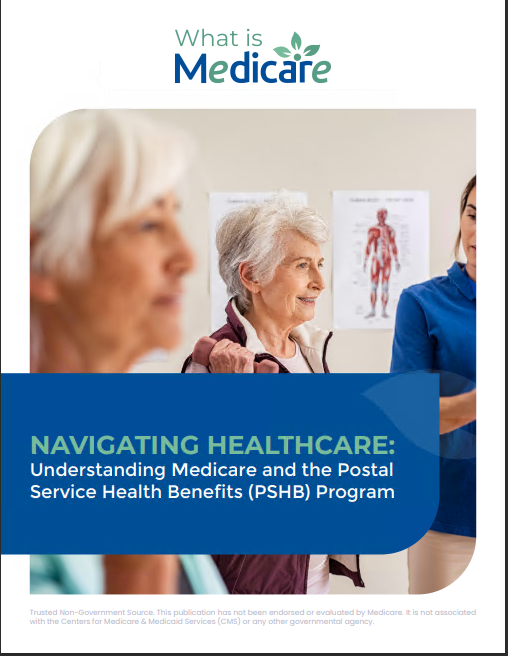Key Takeaways
-
Missing your Medicare enrollment deadline can result in lifetime late enrollment penalties, particularly for Part B and Part D.
-
Understanding which enrollment period applies to you in 2025—Initial, General, Special, or Open—can help you avoid financial consequences and gaps in coverage.
Why Enrollment Timing Isn’t Just a Detail
You might think enrolling in Medicare is automatic or something you can do anytime around your 65th birthday. But in reality, missing key enrollment windows can lead to delayed coverage and costly lifelong penalties. In 2025, the federal Medicare program continues to enforce strict deadlines tied to specific life events and eligibility milestones.
It’s not enough to know that you’re eligible. You need to know when to act.
Your Initial Enrollment Period (IEP) Sets the Stage
For most people, the first opportunity to enroll in Medicare is their Initial Enrollment Period (IEP). This seven-month window surrounds your 65th birthday and applies whether you’re retiring or still working.
Here’s how it breaks down:
-
Starts: 3 months before your 65th birthday month
-
Includes: the month you turn 65
-
Ends: 3 months after your birthday month
If you enroll before your birthday month, your coverage begins on the first day of your birthday month. Enrolling after your birthday delays the start of your Medicare coverage—sometimes by up to 3 months.
Missing this window means you have to wait for a different enrollment period—and potentially face penalties.
The General Enrollment Period (GEP): Your Second Chance (With a Price)
If you miss your IEP and don’t qualify for a Special Enrollment Period, your next chance is the General Enrollment Period (GEP).
-
When: January 1 to March 31 every year
-
Coverage Starts: The month after you enroll
This option is only available if you didn’t sign up when you were first eligible and don’t qualify for a Special Enrollment Period. But there’s a catch: enrolling during the GEP often comes with late enrollment penalties and possible gaps in coverage.
In 2025, if you enroll during the GEP in, say, February, your Medicare coverage starts on March 1. But if you turned 65 in 2023 or earlier, you may already owe penalties.
The Special Enrollment Period (SEP): For Those Who Delayed With Good Reason
Some people delay Medicare because they’re still working and have employer-sponsored coverage. If this applies to you, you might qualify for a Special Enrollment Period (SEP).
You can apply for Medicare without penalty if:
-
You or your spouse are actively working
-
You have coverage through that employer
Your SEP is an 8-month window that begins the month after employment or group coverage ends (whichever comes first).
Important: COBRA and retiree coverage do NOT count as active employer coverage. If you rely on them, you could lose your SEP eligibility and face penalties.
Late Enrollment Penalties: What You Might Pay Every Year
Missing your deadline isn’t just an inconvenience. It can cost you for the rest of your life. These penalties are added to your monthly premium for as long as you have Medicare.
Part B Penalty:
-
10% of the standard premium for each full 12-month period you were eligible but didn’t sign up
-
Applied for life
Part D Penalty:
-
1% of the national base premium for each full month you went without coverage after your Initial Enrollment Period
-
Also applied for life
These penalties can add up, especially when you consider they’re recalculated annually based on premium changes.
Why You Might Not Be Automatically Enrolled
Not everyone gets automatically signed up for Medicare. In 2025, you are automatically enrolled in Part A and Part B only if you’re already receiving Social Security or Railroad Retirement Board benefits at least four months before your 65th birthday.
If you aren’t receiving those benefits yet, you need to actively enroll.
How? You can:
-
Apply online through the Social Security Administration website
-
Visit your local Social Security office
-
Call Social Security at 1-800-772-1213
Enrollment Timing for Medicare Part D and Medicare Advantage
In addition to Part A and Part B, you’ll also need to think about prescription drug coverage (Part D) and Medicare Advantage (Part C) plans. These have their own enrollment rules.
Part D Enrollment:
-
Aligns with your IEP (7-month window)
-
Also available during Annual Enrollment Period (October 15 – December 7)
Medicare Advantage (Part C) Enrollment:
-
Also aligns with IEP and Annual Enrollment Period
-
You must already be enrolled in Part A and Part B to choose an Advantage plan
Failing to enroll in a drug plan (either standalone or through an Advantage plan) when you’re first eligible can lead to Part D penalties.
Annual Enrollment and Medicare Advantage Open Enrollment
Even after you’re enrolled in Medicare, the calendar still matters.
Annual Enrollment Period (AEP):
-
October 15 to December 7 every year
-
Make changes to your Part D or Medicare Advantage plan
-
Switch from Original Medicare to an Advantage plan or vice versa
-
Changes take effect January 1 of the following year
Medicare Advantage Open Enrollment Period:
-
January 1 to March 31
-
For people already enrolled in a Medicare Advantage plan
-
Switch to another Medicare Advantage plan or return to Original Medicare
-
Can’t join a new Part D plan unless switching to Original Medicare
Knowing the difference between these windows is critical to making the changes you want without facing restrictions.
When You Delay Beyond 65: What Happens at 66, 67, or Later?
If you wait to enroll in Medicare past your Initial Enrollment Period and don’t qualify for a Special Enrollment Period, the GEP becomes your only option. But that delay can trigger:
-
Late penalties
-
Delayed coverage start date
-
Limited plan choices during off-cycle enrollment
For instance, someone who turns 67 in 2025 and only now signs up during the GEP will begin coverage the following month, but may owe penalties going forward.
Avoid These Common Pitfalls
To prevent future complications, be aware of these common Medicare enrollment mistakes:
-
Assuming you’re automatically enrolled when you aren’t
-
Missing deadlines because you’re still working but don’t have creditable coverage
-
Relying on COBRA or retiree insurance to delay enrollment
-
Thinking Part D isn’t necessary if you don’t currently use prescriptions
Every year you delay without the proper coverage type increases your risk of a penalty.
When You Should Consider Signing Up Early
If you’re approaching 65 and not yet drawing Social Security, start the process early. The Social Security Administration allows enrollment to begin three months before you turn 65. Enrolling early can help ensure:
-
No gap in coverage
-
On-time benefits
-
Avoidance of penalties
Even if you don’t need all parts of Medicare right away, learning your eligibility windows now puts you in control.
What to Do If You Made a Mistake
If you realize you missed your enrollment window, act quickly:
-
Check if you qualify for a Special Enrollment Period
-
Contact Social Security immediately to determine next steps
-
Speak with a licensed agent listed on this website to review your situation and explore your options
Acting fast may help you reduce or even avoid penalties in some cases.
Stay Ahead of the Clock, Not Behind It
In 2025, Medicare deadlines are as critical as ever. Failing to enroll on time can have a lifelong financial impact and leave you temporarily or permanently without essential health coverage. These are not just bureaucratic details—they are decisions that shape your healthcare future.
If you’re unsure where you fall in the enrollment timeline or whether your current coverage qualifies you for a delay, now is the time to take action. Get in touch with a licensed agent listed on this website for guidance tailored to your specific situation.






